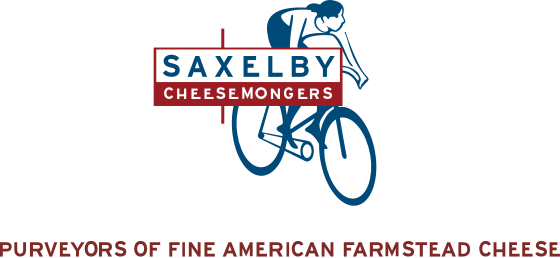Anyone who has tried a bark-wrapped cheese knows there is something unforgettable about the aroma, texture, and flavor. And if you've never tried a bark-wrapped cheese, perhaps after reading this you'll be inspired to try! Read on to learn about what makes bark-wrapped cheeses so special.
Arguably the most famous bark-wrapped cheese is Vacherin Mont d'Or, a raw milk cheese from Switzerland that makes its debut each year in late fall, just in time for the holidays. In the mid aughts, seduced by the creamy decadence of Mont d'Or, American artisan cheesemakers like Andy Hatch of Uplands Cheese Co. and Mateo Kehler of Jasper Hill Farm started making pilgrimages to Europe to understand how these delicate cheeses were made and bring that cheesemaking savoir-faire stateside.
Legend has it that the first bark-wrapped cheeses were made in the French and Swiss Alps during the winter months out of necessity. Those regions are known for their large format cow’s milk cheeses Comté (on the French side) and Gruyére (on the Swiss side) Those cheeses are so large that they require the accumulated milk from many small farms to make them. In the summertime cows would be herded up the mountainside to graze in high open Alpine pastures. The milk would be collected and used in communal cheesemaking facilities called 'frutieres' to make large wheels of firm, pressed cheese meant to last through the long cold winter.
Come autumn the cows would come back down the mountain to the villages in the valley and remain there until the following spring. The change in diet (dry hay and a touch of grain versus fresh pasture) and the lack of exercise (staying cozy in the barn versus out tromping in Alpine fields) meant that the composition and character of the milk would change dramatically. Winter milk made from cows who are indoors eating sweet dry hay and grain is richer and more full of fat, perfect for crafting ooey-gooey bark-wrapped cheese.

In keeping with the centuries-old tradition of making cheese that fits the season, local cheesemakers began to make small, soft cheeses wrapped in bark for their families and for local markets. These delicate wheels are meant to ripen to the point of being custardy and nearly liquid. The spruce bark wrapped around the outside of each wheel serves two purposes: First, it acts as a girdle to keep all that gooey cheesy goodness contained, and second, it imparts a magical cacophony of resinous, piney, smokey and meaty flavors to the cheese. The popularity of this style of cheese skyrocketed and made these delicate cheeses, originally made just as a treat for locals, into something sought-after the world over.
The bark used to wrap these cheeses comes from the inner 'cambium' layer of bark of the Spruce tree that is just below the hard, outer layer that we can see and touch while walking through the forest. This layer of bark is soft and flexible, almost like leather. This bark is stripped off, cut into strips, and boiled in order to sanitize it before the strips are wrapped around young wheels of cheese.
When the cheese is young, the spruce imparts a very bold and distinct flavor. Zoe Brickley of Jasper Hill Farm says that at an early stage it is 'pitchy, sprucey, and almost tannic'. However, as the cheeses ripen, soften, and mature, she theorizes that 'those aroma compounds [in the spruce bark] get metabolized and mix with what’s happening in the cheese' to create flavors like mustard, raspberry, juniper, ripe banana, and smoked meat.
Ready for a taste? Sample our favorite bark-wrapped beauties from America's best artisan cheesemakers!
How should I eat these cheeses?
- We recommend allowing bark-wrapped cheese (and all cheese!) to come to room temperature before eating them so that they express their fullest flavor.
- The easiest, simplest, and arguably best way to eat these cheeses is simply to allow them to warm to room temp, and schmear them, rind and all, onto a piece of bread.
- Try a side by side taste test of two different bark-wrapped cheeses to see how the different milks and rind treatments affect the flavor
- Gently heat the cheese in the oven and scoop out the gooey molten interior and spread on bread for a cozy winter meal!
- Once most of the cheese is gone and you just have the ring of bark left, you can roast potatoes and swirl them around the bark to get all the cheesy bits melted onto the potatoes.

